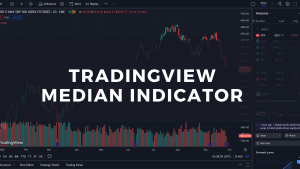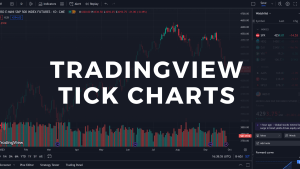This article on Trading Unpredictable Markets is the opinion of Optimus Futures.
Traders crave certain market conditions and chart setups that will yield good trade opportunities that they can string together in a neat upward trending equity curve. Instead they often get hammered with unexpected price movements and varying market conditions resulting in losses.
Below we analyze why markets exhibit a certain degree of unpredictability and what it means to you as a trader striving for consistent results.
Why Trading Isn’t an Exact Science
Mathematicians and expert quantitative traders have been trying to quantify the fickle nature of the markets in an attempt to produce the ‘holy grail’ of trading methodologies; the ultimate model of price predictability that would beat the market every time. They fail every time, largely due to the certain degree of ‘randomness’ that can never be quantified.
When you consider the fact that no two human minds can think, act or work alike, it is conceivable to believe that a market that is made of myriad number of these minds will result in complexities and phenomenon that will not always be perfectly aligned to result in a case of 100% predictability.
In an earlier article we discussed how traders can look at charts differently and use the same information with different interpretations that could result in literally opposite decision making and execution.
A certain market condition that is a lucrative haven for one trader can be a nightmare situation for another. A breakout play for one trader can be a potential fake out scenario for another. What may appear as a strictly random trade to a price action trader could be the perfect entry point for another trader relying entirely on flashy indicators. A pullback into a trend can be seen as an opportunity to get in at a better price for one trader and a reversal opportunity for another.
We could go on and on discussing scenarios where traders could be interpreting the same information differently. In a giant real world market scenario, this explains why there are usually buyers and sellers willing to participate at most price levels. If this was not the case, we would really just be witnessing large gaps and erratic price action. In fact, you should find merit in this case as you compare a liquid futures market to an illiquid one that has fewer participants. The illiquid markets will have more gaps and volatility with more unpredictable price action.
The picture becomes clearer as you start to add in other factors that affect modern trading environments. Scheduled and unscheduled fundamental developments and news events that may not always line up with technical analysis, the growing use of algorithmic trading strategies and the highly debatable and controversial high frequency trading that harness computing power to transact large volumes of orders in a short time, all explain why it is near impossible for the market to react in exactly the way you expect even most of the time.
3 Tips to Trading Unpredictable Markets
Now that we have slightly better understanding of why the markets are not always precise in terms of price movement, let’s explore the implications for you as a trader and how you can go around the problem to still be able to push your equity curve forward and up.
1. Be Patient
At the core of everything destructive that results out of the market behaving unexpectedly is the trader’s emotional response to this erratic behavior and lack of patience.
Know that in any given number of past trades, there will always be some that can be categorized as ‘genuine losses’. Genuine losses refer to those trades that you lose money on where you can’t blame poor decision making. Besides reminding the trader of the need for proper money management, these trades also preach the need for patience and perseverance. Knowing that the market always has the potential to surprise you is a core belief that results in a conservative trading approach that yields consistent results.
Mature, more seasoned traders understand that they cannot control the market and are therefore more willing to be on the sidelines in uncertain market conditions. Newer traders however, in their quest to feel powerful and in control, want to be decoding the markets at all times and find themselves agitated and frustrated when they are not able to do so.
As you emerge into a seasoned trader yourself, you will likely be able to analyze the market more effectively than when you started. There is a lot of wisdom however in understanding that you will never be able to do it all the time.
2. Have a Flexible Trading Method
Another tool in your arsenal against fickle markets is a flexible trading method that relies on quantifiable but diverse means to enter and exit the market that encompass varying market conditions.
A very stringent trading method can eliminate all guesswork and make trading an objective stress-free practice, but fares poorly with varying market conditions. Importantly though, it is also futile to operate with an overly flexible trading method that is too vague and exposes the trader to over trading and too much of impromptu thinking and decision making.
The ideal method will utilize objective but diverse set of tools and entry triggers and adaptable trade management strategies that suit the ongoing market conditions well.
3. Have a Flexible Analysis Approach
This is perhaps the most important implication of uncertain market conditions for a trader. While a trading method will to a certain degree enclose a particular scenario for you to be executing a trade in, analyzing the market in general does not necessarily need to have the same restrictions. While inexperienced traders are always content on only looking for trading opportunities and like to think while being confined by the tools of the trading system alone, more experienced traders have the ability to be freer when analyzing market direction and sentiment. And this unbounded approach is the key to looking at the market from different perspectives that lowers the probability of being surprised by market movements you did not expect.
For example, a trader that uses a wedge breakout strategy only may confine themselves to using and following trend lines alone. The same trader would be better off analyzing the market using a vast array of other tools like horizontal support and resistance levels, trend indications, momentum indicators, trading volumes etc. Note that the trigger to a trade might still be wedge pattern breakouts for this trader but a more holistic market analysis will naturally result in the trader being more informed and hence more prepared for upcoming market reactions.
The same information also yields its use to a trader when in a trade as well. Knowledge in-advance of potential ‘trouble areas’ for price, or awareness of important upcoming news can lower the chances of the trader botching the all-important trade exit or riding the emotional roller coaster after seeing rapid price movements that he or she failed to anticipate beforehand.
None of these strategies and considerations provide a foolproof blueprint to absolute success in trading. There should still be ample moments when you can be left scratching your head wondering why the market moved the way it did. As we have been trying to contest throughout this article, nailing down future price movements all the time is actually impossible. What is possible though, is your growing ability to understand market behavior, price action dynamics and using a multi-dimensional analysis approach that leaves you with maximum information to act logically all the time. If you have a true edge and work with a proven system, it then just boils down to a large enough sample size that reveals your edge and pushes your equity curve higher.
There is a substantial risk of loss in Futures trading. Past performance is not indicative of future results.
















